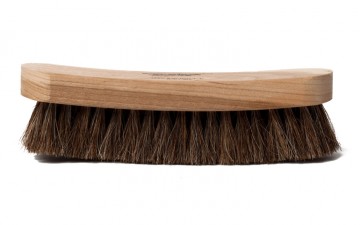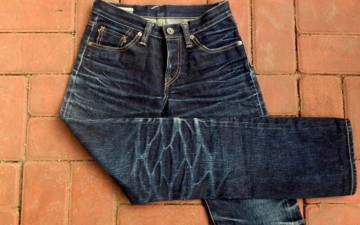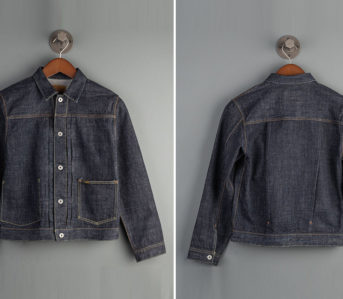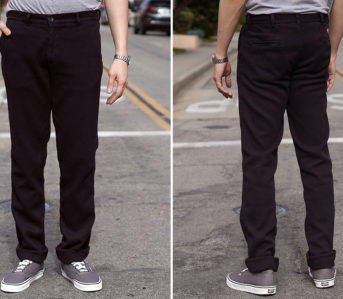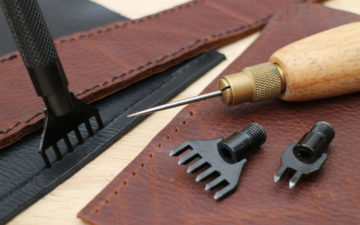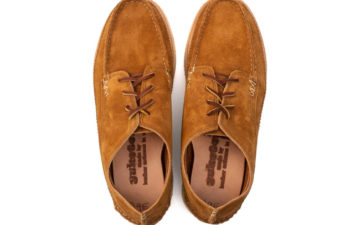With the Northern Hemisphere firmly in the throws of winter, you’re more than likely grabbing for the gear that will keep you warm and dry. As one clever soul once said, “there’s no such thing as bad weather, just inappropriate clothing”, or something like that. You get the picture. Being caught out amongst a downpour on your morning coffee run or underestimating just how cold those morning frosts can be, categorically sucks.
Chances are you’ll be feeling the cold and in a funk for the rest of the day. But if you did choose wisely, checked your weather app, picked you your go-to piece of outerwear and went head to head against the winter, it’s more than likely you’ll have picked up a parka.
We all know that the term ‘parka‘ can be applied to a whole host of garments in the menswear world and the Cambridge Dictionary definition of ‘a long, often waterproof, warm jacket with a hood’ confirms this. The award for most iconic parka of the twentieth century would probably be awarded to the Fishtail—the US Army’s many variants being a prime example.
Made famous by British ‘Mods’ (think Quadrophenia) and sold in military surplus stores across the western world, the Fishtail Parka is one of the undisputed kings of coats. But today’s subject is a much more humble, unassuming and perhaps even more popular version of the parka (you just don’t realize it yet).
The iconic Holubar ‘Deer Hunter’ Mountain Parka (Image via Working Class Heroes).
With lineage all the way back to World War Two, the Mountain Parka is one of the most recognizable outerwear silhouettes of all time. While the term ‘Mountain Parka’ could be interpreted in different ways, for the purposes of this article we’re referring to a hooded, zip-front, four-pocket jacket which may or may not have insulating properties.
Think Holubar, Sierra Designs, and early The North Face ‘brown label’ from the 1970s. Think Yosemite, the great outdoors and the rise in popularity of pursuits like climbing, hiking and cross-country road trips. The Mountain Parka was there for it, from hikes through the Rockies, dirt-bagging at Camp 4 and even fending off the sea breeze on the North Shore.
Commonly seen in eye-catching colors like burnt orange or vibrant teal, it was a garment that not only advanced the technological composition of outdoors gear, but became a renowned piece of outerwear for all walks of life. Its simple and functional design leant itself to any manner of pursuits, while its weatherproof properties meant it could survive in most environments.
Military Lineage
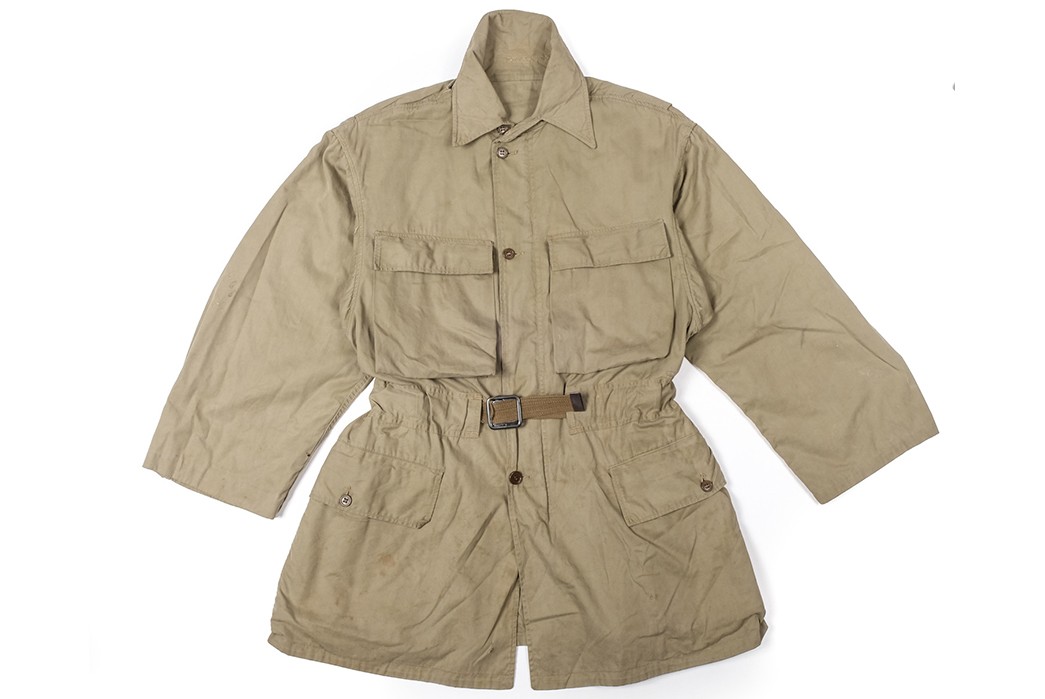
US Army Mountain Jacket issued to Mountain troops and special forces units during World War II (Image via Brut).
Changes in modern warfare and developments in garment production resulted in the WWII soldier looking vastly different to his WWI counterpart. While wool was still used in the military uniform, cotton became common place and nylon wouldn’t be far away. One landmark development for the US Army during the Second World War was the invention of the ‘Field Jacket’, which set the standard for decades to come.
The birth of the M-1941 Field Jacket (or ‘Jacket, Field, O.D.’ as it was officially named) was the catalyst for this development, but it’s slightly younger brother the M-1943 Field Jacket (‘Jackets, Field, M-1943’) would prove to have a lasting impact not only on military uniforms but the modern menswear wardrobe. It featured a button front, four pockets (two at the chest and two at the hip), optional padded liner, a removable hood and was made from a durable cotton fabric. But while this piece of olive drab armor was in development, the US Army had also been working on a unique jacket for its mountain troops in order to assistant soldiers in alpine operations.
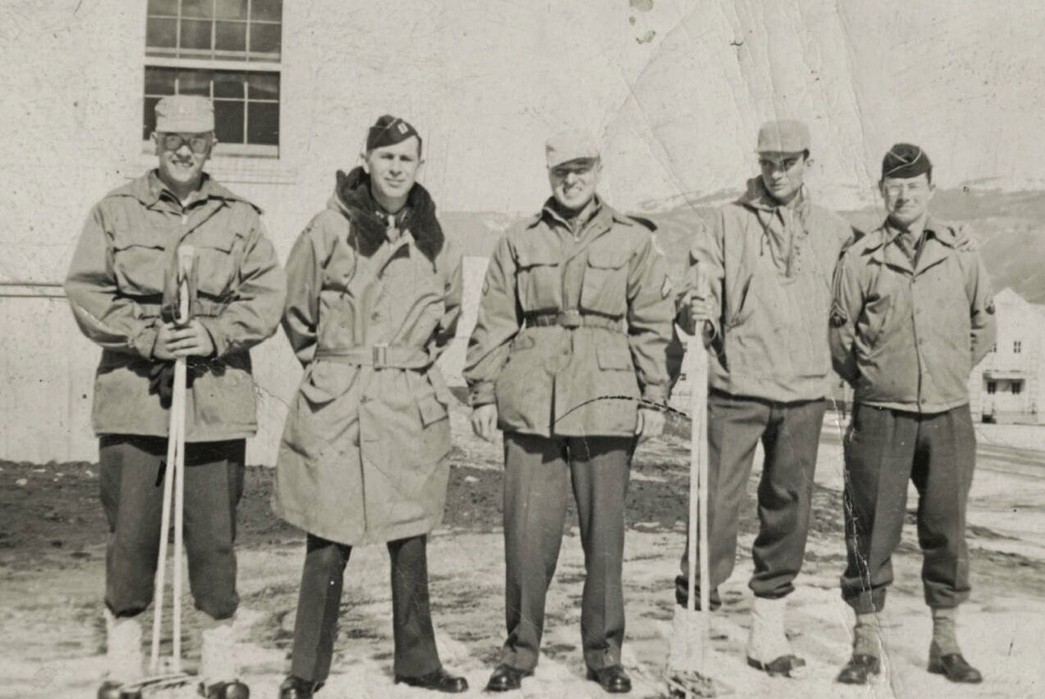
US Army mountain troops displaying various alpine clothing items. The soldiers on the far left and center wear the Mountain Jacket (Image via Saunders Militaria).
The ‘Jacket, Mountain’ was based on a similar design to the M-1943 Field Jacket but also featured a number of additional features. Retaining a four pocket front, the Mountain Jacket featured an attached hood (which could be stowed into a hidden pocket at the top of the jacket), a three quarter zip front, a large zipped pocket on the back of the jacket (similar to a ‘game pocket’ seen on hunting jackets) which would allow troops forego using a rucksack for short missions, an external belt which ran around the waist of the jacket and an integral harness system (intended to support heavy loads in the back pocket and ensure the jacket retained its positioning on the soldier during combat).
The Mountain Jacket was manufactured by the likes of Goodall Co., Perry Sportswear Co. and Rogol Mfg. Co. and is now a highly desirable piece of vintage clothing which commands high prices (if you can find one). Only made in small numbers and used by fighting units including the First Special Service Force (FSSF) and Tenth Mountain Division, the Mountain Jacket is an unsung hero of Second World War which set the stage for significant developments in outerwear during the post-war years, the effects of which we’re still seeing today.
The Great Outdoors
During the 1950s and 60s, America experienced exponential growth and societal change. It was a leading world superpower, its economy was booming and the results of this prosperity were available to more people than ever before in the form of new cars, homes, gadgets and recreational pursuits (for more see our history on the Rise and Fall of Made in USA).
Unemployment and inflation were low, but wages were high and the middle-class had more money than ever. This was a time when there had never been more to buy, so families took up recreational activities, new hobbies and interests. The outdoors became a popular playground for middle class America. Camping and hiking were family pursuits whereas outdoor activities like climbing and fishing saw exponential growth as they developed from hobby into sport.
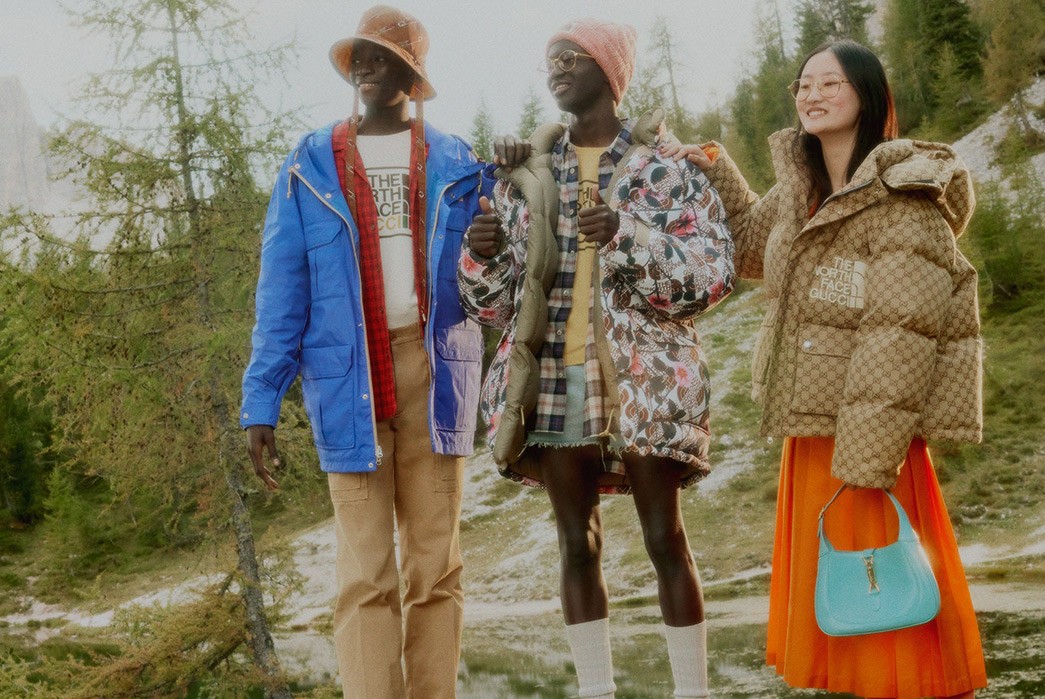
Harkening back to a time when America was discovering the ‘Great Outdoors’ the latest North Face x Gucci advertising campaign features a blue Mountain Parka in its natural habitat (Image via GQ).
This was also a time that had a significant impact on fashion in terms of technological advancements in fabrics and materials, as well as silhouettes and styles. Prior to WWII, outdoor clothing was primarily made from heavyweight canvas, waxed cotton and even animal skins. But from the 1950s – 1970s this all changed.
Combined with advancements in clothing spurred on by the war years, many Americans now had the means to create small businesses and the technology to design and develop new products. During the the following 30 years, a whole host of outdoor brands were born including Chouinard Designs (later to become Patagonia), Gerry, Holubar, MSR, REI, Sierra Designs and The North Face. Many of these companies however, didn’t start out producing clothing but outdoor gear including tents and sleeping bags. Some of these brands would fade away whereas others would become global powerhouses.
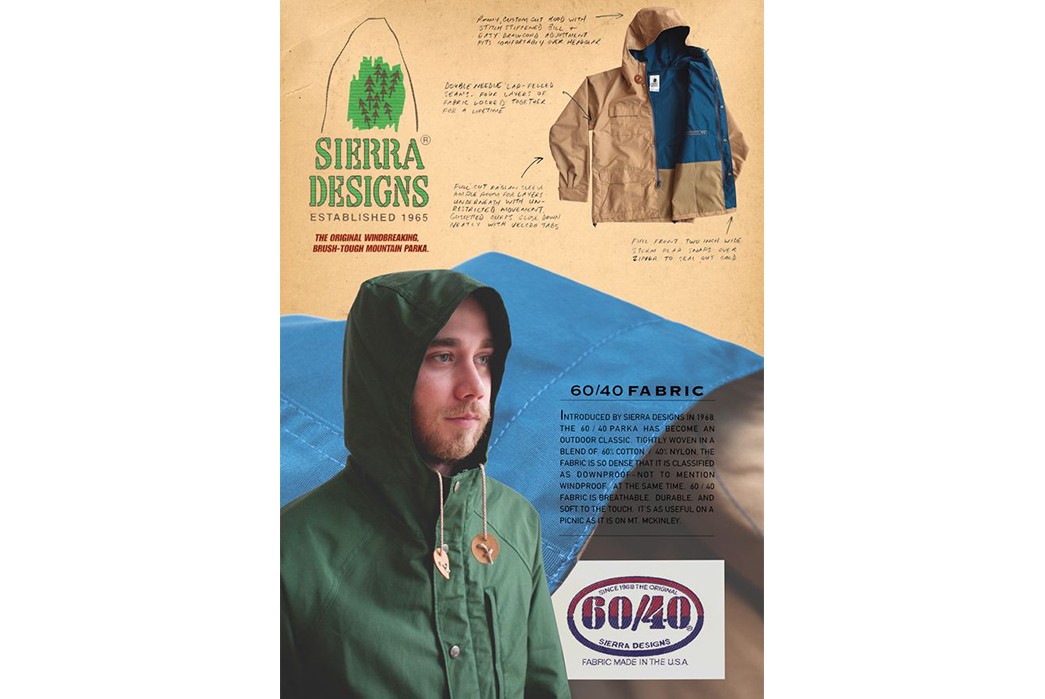
Sierra Designs advert for the “The original windbreaking, brush-tough mountain parka” (Image via Pinterest)
But they all had one thing in common—they were born during an era of unprecedented development in outdoors apparel, the effects of which we are still seeing today. One only has to look at the outdoors trend which has taken the fashion industry by storm during the last eighteen months, the results of which recently resulted in a collaboration between Gucci and The North Face.
The Original Mountain Parka
We’ve already acknowledged the design inspiration for the Mountain Parka through its military lineage and broadly classified its key features, as well as looking at the broader social context for the garments development. But who can lay claim to creating the original?
The timeline can get a little hazy, but outdoor writer and gear expert Bruce Johnson claims that Alice Holubar’s, “Stand out innovation was the first true Mountain Parka, her legitimately cult-status NP-22 shell garment pre-dated Sierra Design’s famous 60/40 parka by at least ten years.”
Founded in 1946 by Alice and Roy Holubar, the brand is credited with a number of early breakthrough developments in tents and sleeping bags designed for mountaineering. Originally based in Boulder, Colorado, Holubar manufactured a lot of their own gear for retail sale but they also introduced ‘sew it yourself’ kits, where the customer could buy a kit directly from Holubar to sew their very own Mountain Parka. Although a fairly short lived novelty, it was a striking new model of direct to consumer retail at the time.
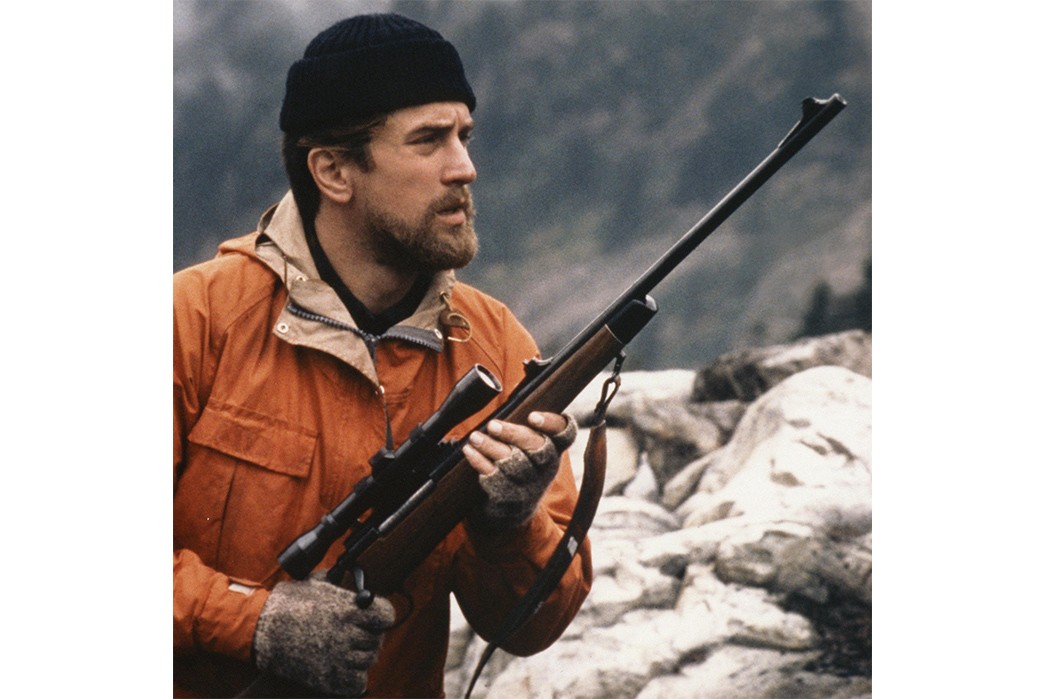
Robert De Niro wears an orange Mountain Parka by Holubar in the 1978 film The Deer Hunter (Image via The Times).
But the brand’s real claim to fame would come later, when they supplied the orange Mountain Parka to be worn by Robert De Niro in the iconic 1978 film The Deer Hunter. Catapulting the brand (and garment) into the limelight, it was this moment that solidified the Mountain Parka’s reputation as a cult classic piece of outerwear.
Sierra Designs however, are also credited with bringing the Mountain Parka to the masses during the late 60s and early 70s. Founded in 1965 by Bob Swanson and George Marks on the principle that all people deserve to have good gear for exploring the outdoors, Sierra Designs went on to create a number of outdoor innovations that are still in use today.
After meeting in Berkley in 1963, Swanson and Marks pooled their years of experience in the outdoors and put it straight into the gear they were producing. The 60/40 Mountain Parka is without a doubt the brand’s most iconic product and vintage examples are still in high demand today.
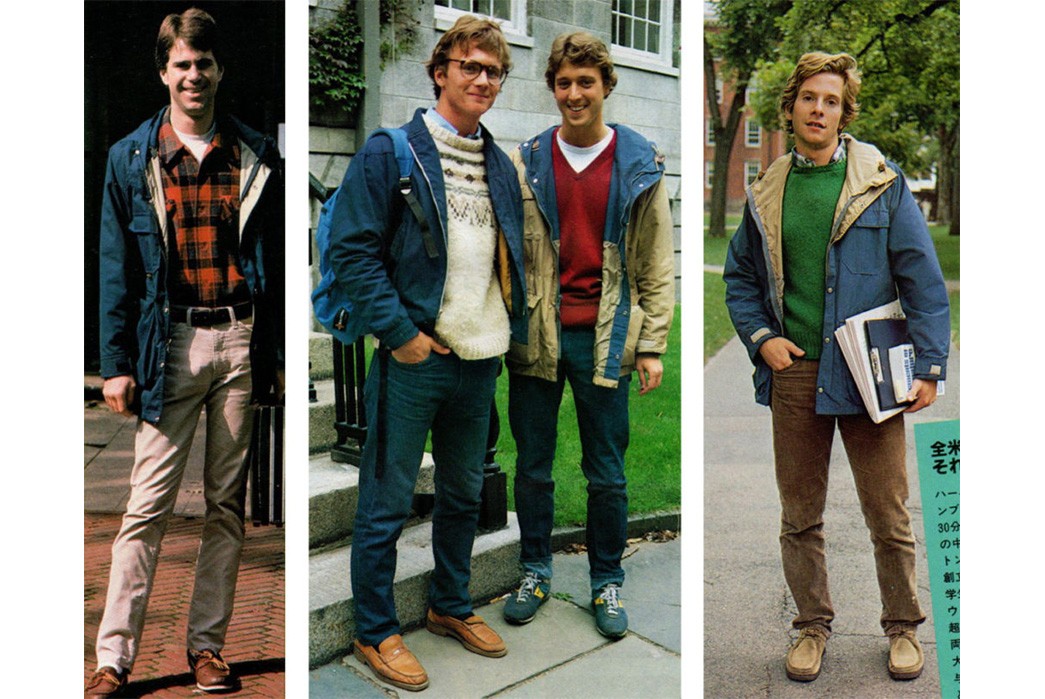
Mountain parkas came to be worn by everyone from climbing dirt bags to college students (Image via Put This On).
Scouring the pages of Depop, eBay or Grailed, it’s plain to see the impact of the Mountain Parka on contemporary outerwear. From large brands like The North Face, Pendleton, Eastern Mountain Sports, and Woolrich to now defunct labels like Camp 7 and Early Winters, the 1950s-1970s marked a period of incredible outdoor gear development. All these brands (and more) tried their hand at offering their own version of the Mountain Parka, with subtle adaptations here or there.
But combined, they all contributed to the garment becoming an icon. As an ode to one of the best pieces of outerwear, we’ve pulled together six examples of the Mountain Parka for your perusal. From traditional takes like Battenwear or Crescent Down Works to more military inspired silhouettes like Engineered Garments, they all remain true to the design principles of the original.
Sierra Designs Short Parka
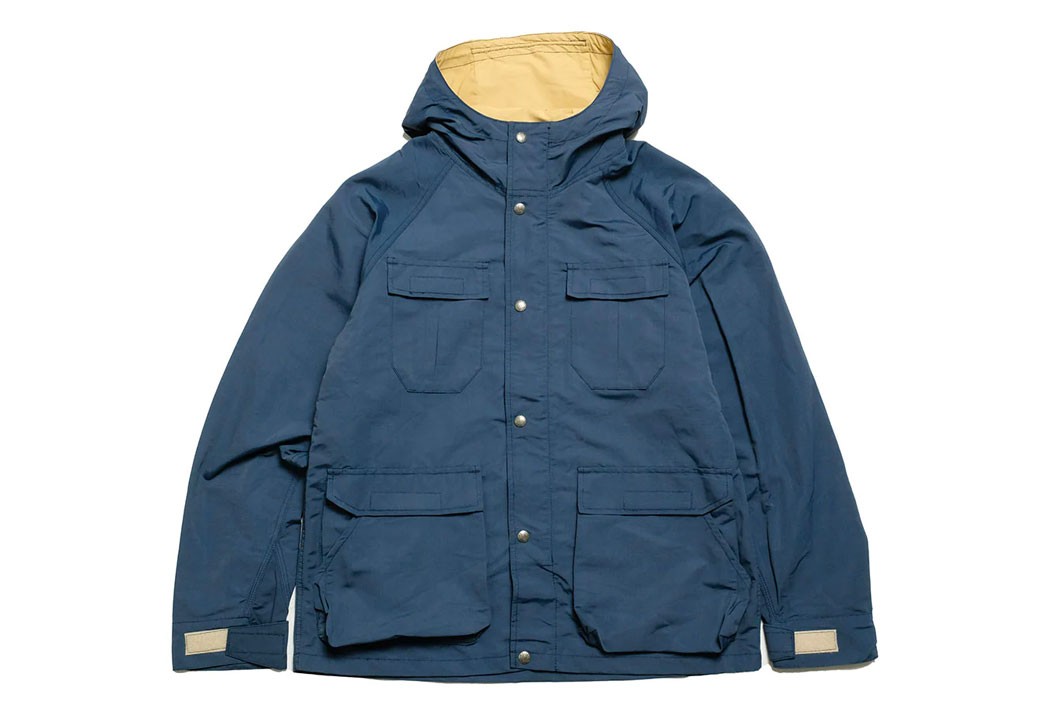
Holubar may have been first, but Sierra Designs is still here. Sierra Designs Parka has been a timeless standard in American casual wear since it was first introduced in 1968. The fabric is 60/40 cloth with cotton for the weft and nylon for the warp. This fabric, commonly known as “60/40,” is breathable under normal conditions, but when it rains, the cotton expands due to moisture so that the cotton becomes denser and, combined with the water repellency of the nylon, it becomes difficult for water to penetrate.
And you can have it just as it was for $340 at Hinoya.
The North Face Purple Label 65/35 Mountain Parka
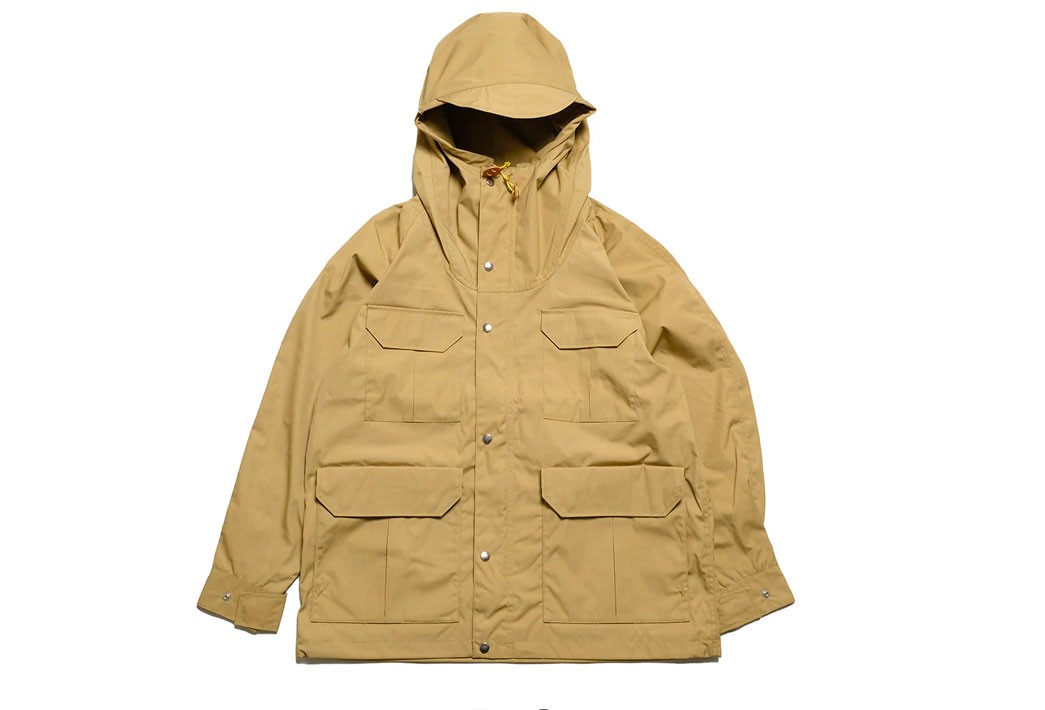
We’d be remiss for not including an example from one of the original mountaineering brands from the golden age of the great outdoors; The North Face. Founded in San Francisco in 1968 by Doug Tompkins (RIP), ‘TNF’ has conquered the climbing world and beyond during the last fifty years. From high street to high fashion (we see you, Gucci), the brand has arguably done more for outdoor apparel than any other.
Harkening back to its origins via Nanamica, The North Face Purple Label was previously exclusive to the Japanese market but—fortunately for us—now sees wider distribution. The 65/35 Mountain Parka from Purple Label is made from Bayhead Cloth and offers a water-resistant finish. Based on TNF archive model from 1976 with some subtle updates, it has all the bells and whistles you’d expect. And obviously there’s that Purple Label flex.
Available for $314 at Sunhouse.
The North Face 86 Retro Mountain Jacket
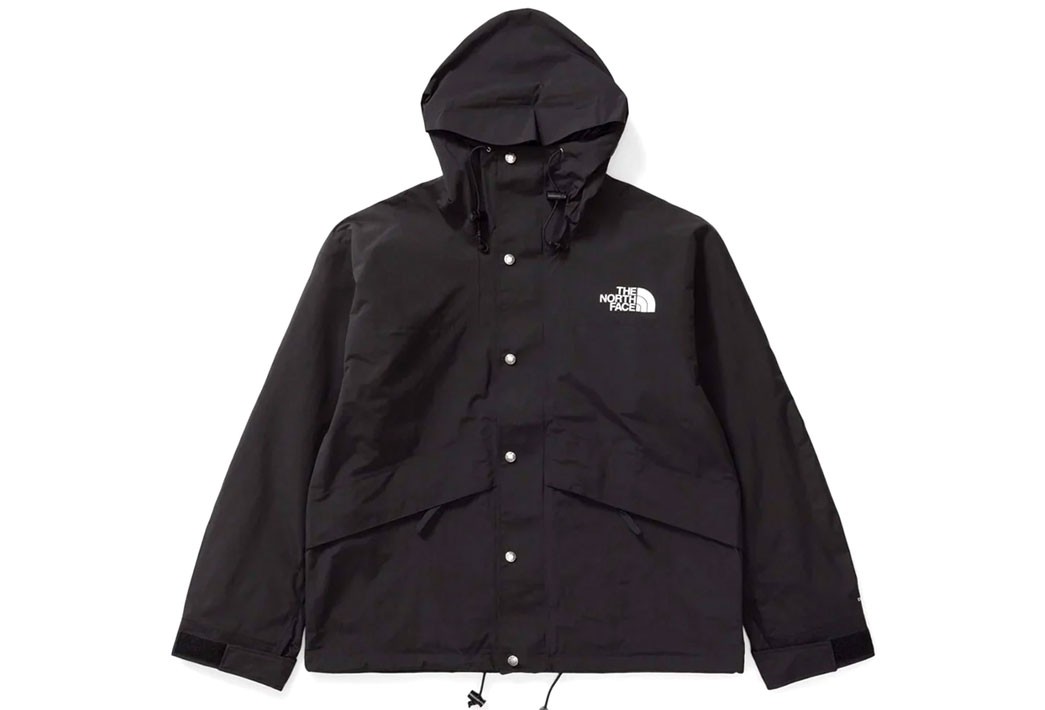
If you’d prefer your retro mountain style to be a little more modern, The North Face will happily oblige with a recreation of their jacket from 1986. The updated trimmings include pit zips, a lay flat hood, a waist drawstring, and the whole thing is made from recycled materials into DryVent, The North Face’s answer to Gore-Tex, which will keep you warm and dry on the trail or sidewalk.
Available for $260 at Hatchet Supply.
Manastash T80 Mountain Parka
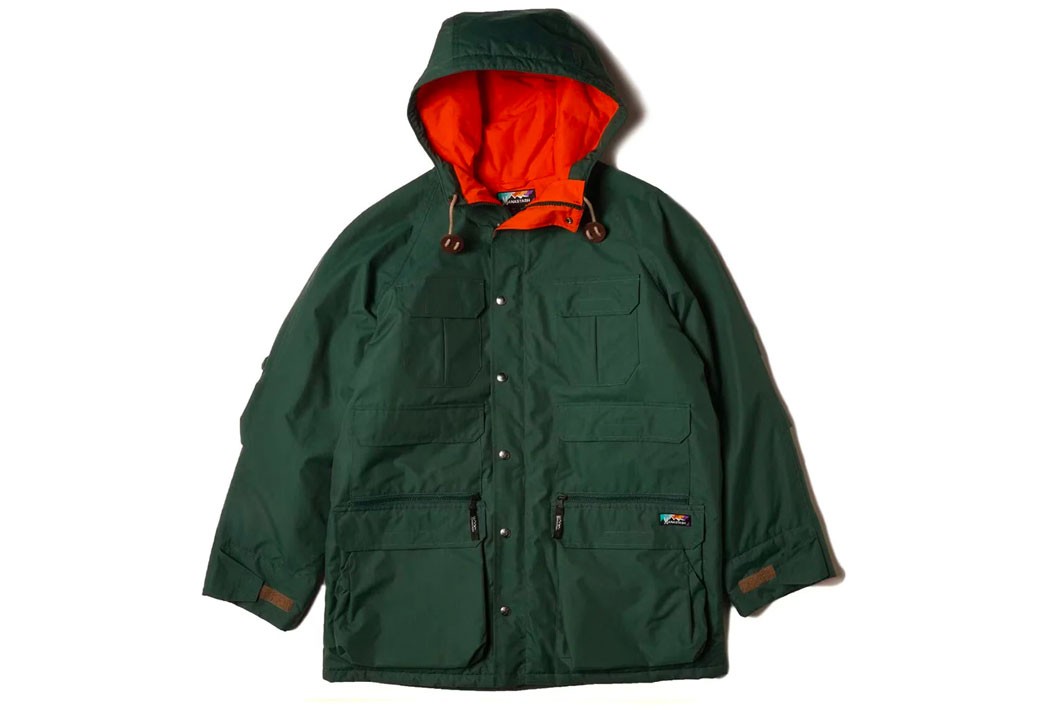
Think of Manastash as the more eco-oriented LL Bean of Japan. This mountain parka pairs a plethora of pockets (there’s 8 just on the front) with sustainably sourced materials. Plus it’s currently on sale.
Available for $225 at Hatchet Supply.
LL Bean Mountain Classic Jacket
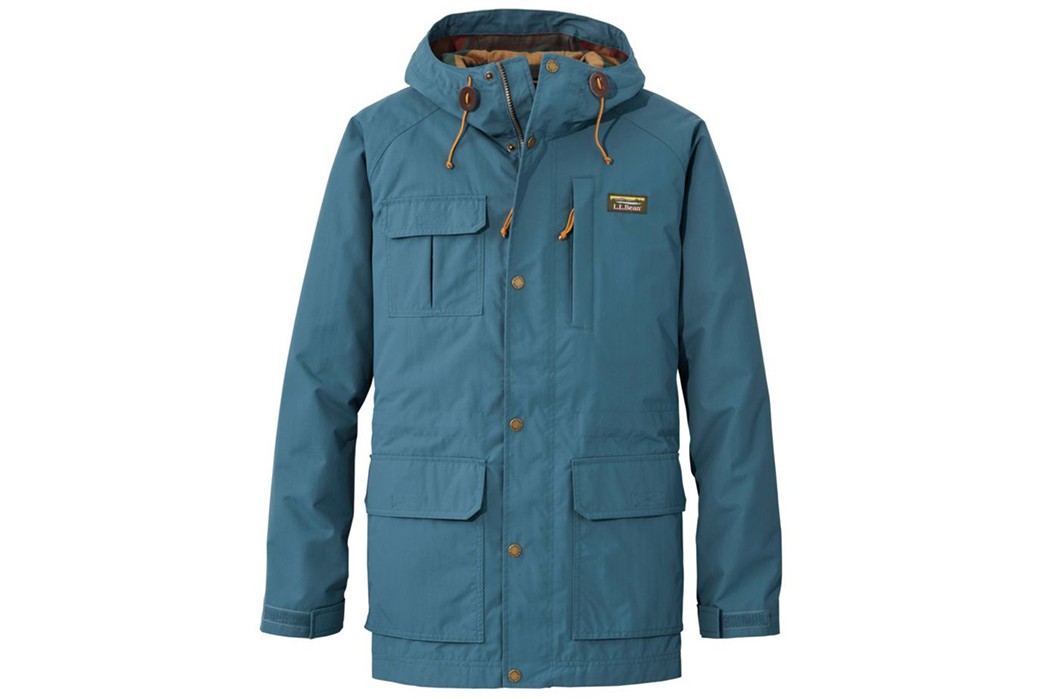
Image via LL Bean
How could we talk about parkas and iconic outerwear without mentioning the late great Leon Leonwood Bean? Undisputed king of outdoors-wear, LL Bean have been straight up killing it since 1912. From tote bags to hunting coats, you can’t go wrong with Maine’s finest outfitter. The LL Bean Mountain Classic Jacket is a more entry level piece amongst our offering, but nonetheless competent. With a 100% nylon outer and polyester / wool flannel blend lining, it offers an affordable slice of hardy outerwear with three-season versatility. Not designed for the depths of winter, but perfectly adequate for the rest of the year and with that classic Mt. Katahdin logo on the left chest, what’s not to like?
Available for $160-170 at LL Bean.
Unique Garment Cordura ‘Bird View’ Mountain Parka
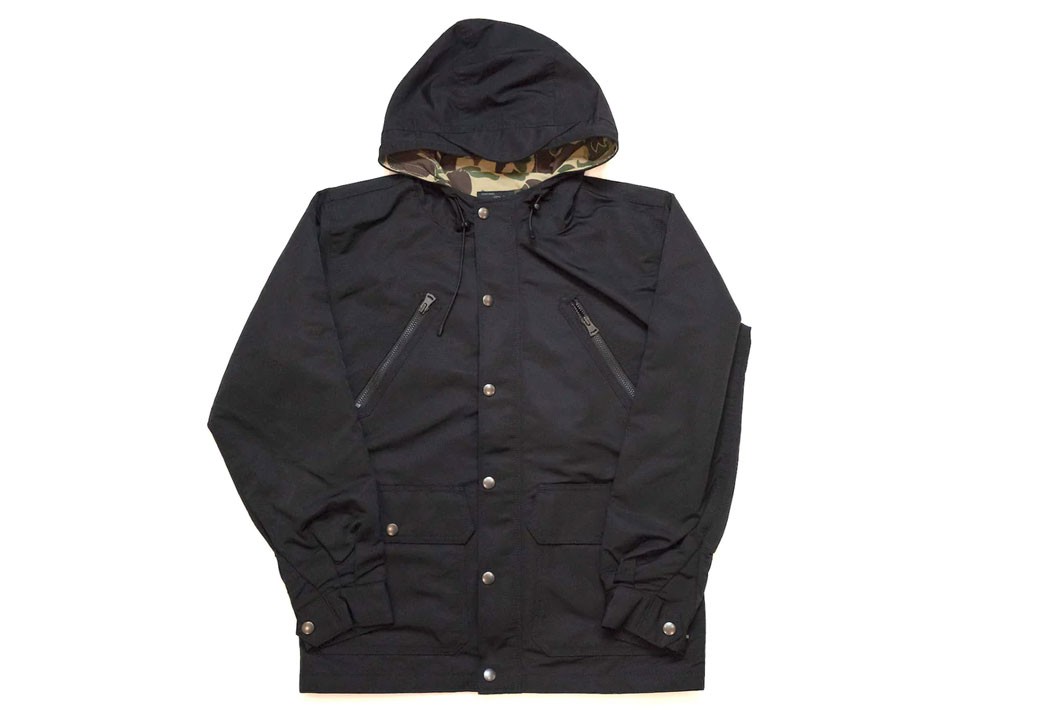
Unique Garment Co. stands out from the rest of the bunch with a modern spin on the mountain parka in a Japanese cordura shell paired with a duck hunter style camo lining.
This made in Japan offering features two front pockets with hidden hand warmers, two zip chest pockets, and all with oversized Waldes zippers.
Available for $436 at Corlection.
